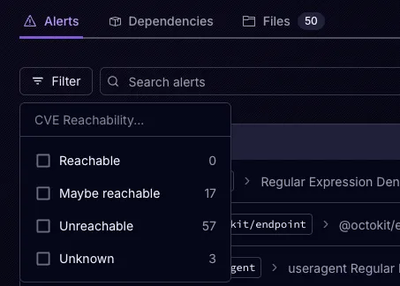
Product
Introducing Rust Support in Socket
Socket now supports Rust and Cargo, offering package search for all users and experimental SBOM generation for enterprise projects.
A python library to display data structure values for easier navigation and exploration.
py-data-viewer is a lightweight Python library that makes exploring and navigating complex data structures in the terminal effortless. It provides a clear, tree-based visualization of nested dictionaries, lists, objects, and more, making debugging and data analysis more efficient. No more getting lost in complex nested structures or struggling to understand what's inside your data or how to access them!
Trees for complex data structures, Trees for simple data structures, Trees for everything!!
from py_data_viewer import vprint
async def some_async_fn():
response = await some_api_call()
vprint(response) # 👈 pass in full response or part of it! It can handle Iterables[of_any_T]!!

vprint(data, "result")

vprint function.To install the package, use pip:
pip install py-data-viewer -U
Then, import:
from py_data_viewer import vprint
vprintThe vprint function is the easiest way to explore data structures in your Python scripts. It provides a tree-like visualization of your data, making it ideal for debugging API responses, especially from frameworks!
from py_data_viewer import vprint
# Simulated API response
response = {
"chat_message": {
"source": "Assistant",
"content": "This is a response from an LLM.",
"metadata": {},
},
"inner_messages": [
{
"type": "ToolCallRequestEvent",
"content": [{"name": "search", "arguments": '{"query":"example"}'}],
},
{
"type": "ToolCallExecutionEvent",
"content": [{"name": "search", "content": "Search result here."}],
},
],
}
vprint(response, var_name="messages", colorize=False)
Output showing you exactly how to access the data you want:
messages
├── messages.chat_message = dict with 3 items
│ ├── messages.chat_message.source = 'Assistant'
│ ├── messages.chat_message.content = 'This is a response from an LLM.'
│ └── messages.chat_message.metadata = dict with 0 items
└── messages.inner_messages = list with 2 items
├── messages.inner_messages[0] = dict with 2 items
│ ├── messages.inner_messages[0].type = 'ToolCallRequestEvent'
│ └── messages.inner_messages[0].content = list with 1 items
│ └── messages.inner_messages[0].content[0] = dict with 2 items
│ ├── messages.inner_messages[0].content[0].name = 'search'
│ └── messages.inner_messages[0].content[0].arguments = '{"query":"example"}'
└── messages.inner_messages[1] = dict with 2 items
├── messages.inner_messages[1].type = 'ToolCallExecutionEvent'
└── messages.inner_messages[1].content = list with 1 items
└── messages.inner_messages[1].content[0] = dict with 2 items
├── messages.inner_messages[1].content[0].name = 'search'
└── messages.inner_messages[1].content[0].content = 'Search result here.'
from py_data_viewer import vprint
data = {
"user": {"id": 1, "name": "Alice"},
"actions": [
{"type": "login", "timestamp": "2023-01-01T12:00:00Z"},
{"type": "purchase", "details": {"item": "book", "price": 12.99}},
],
}
vprint(data, var_name="data")
The vprint function supports several options to customize the output:
var_name: Specify the variable name to display in the output.colorize: Enable or disable colorized output (default: True).Example:
vprint(data, var_name="custom_data_name", colorize=False)
Contributions are welcome! To contribute:
This project is licensed under the MIT License. See the LICENSE file for details.
FAQs
A python library to display data structure values for easier navigation and exploration.
We found that py-data-viewer demonstrated a healthy version release cadence and project activity because the last version was released less than a year ago. It has 1 open source maintainer collaborating on the project.
Did you know?

Socket for GitHub automatically highlights issues in each pull request and monitors the health of all your open source dependencies. Discover the contents of your packages and block harmful activity before you install or update your dependencies.

Product
Socket now supports Rust and Cargo, offering package search for all users and experimental SBOM generation for enterprise projects.

Product
Socket’s precomputed reachability slashes false positives by flagging up to 80% of vulnerabilities as irrelevant, with no setup and instant results.

Product
Socket is launching experimental protection for Chrome extensions, scanning for malware and risky permissions to prevent silent supply chain attacks.